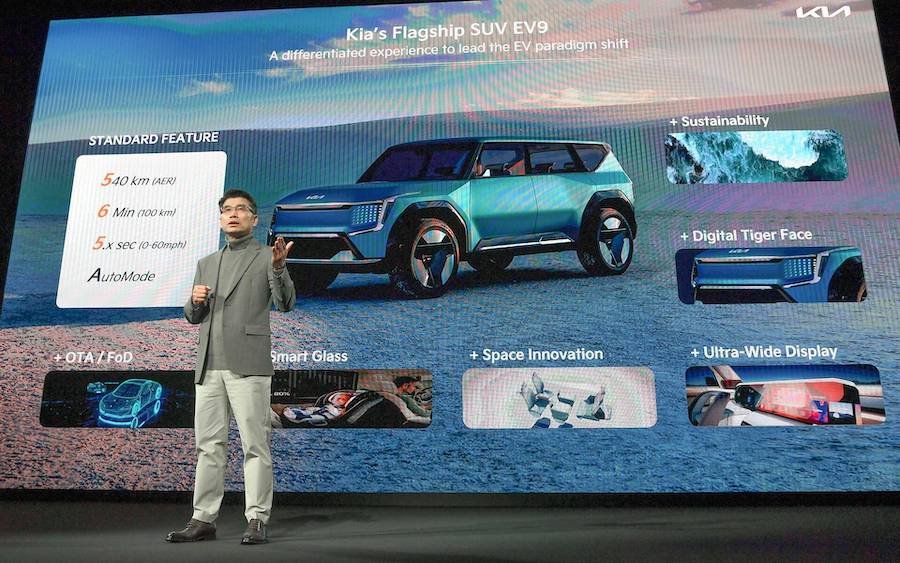Kia To Launch Two Electric Pickup Trucks By 2027 When It'll Have 14 EVs

Hot on the heels of simultaneous announcements made by Hyundai and Genesis to launch a combined 17 EVs by 2030, Kia is also doubling down on its EV efforts. Some will be surprised to hear the expanded zero-emission portfolio will include not one, but two pickups. One is a "dedicated" model, meaning it will ride on a bespoke electric platform. The other is a "strategic" truck tailored to emerging markets, so it’ll likely use an ICE-based architecture.
Kia intends to commence production of the bespoke electric ute in the United States from 2024 when a midsize SUV will also hit the local assembly line. A year after, small and midsize EVs will be produced in Europe along with entry and midsize models in India. These new additions will all follow midsize EVs programmed to enter production in China from 2023.
The EV9 concept unveiled in mid-November 2021 at the Los Angeles Auto Show will morph into a namesake production model next year. Kia mentions the road-going large SUV is going to stretch at approximately five meters (197 inches) and it’ll hit 62 mph (100 km/h) from a standstill in just five seconds.
With the battery fully charged, the EV9 will have a maximum driving range of roughly 540 km (336 miles), although Kia doesn't mention the test cycle upon which the number is based. When the concept was unveiled a few months ago, the company said its battery had enough juice for 483 km (300 miles). It too will ride on the E-GMP platform and will cover 62 miles (100 km) after charging the battery for just six minutes.
The EV9 is important for other reasons as it will usher in support for OTA updates and FoD. The latter is an acronym for Feature on Demand, allowing customers to unlock functions post-purchase. It's unclear how that will happen, but there are two plausible scenarios – either by paying a one-time fee to permanently gain access to the desired feature or through a subscription plan. Either way, logic tells us those goodies will come bundled with the car from the get-go but they'll be sitting behind a paywall.
In addition, the Kia EV9 will be the brand's first production model to adopt AutoMode, which is marketing speak for an advanced suite of driver assistance systems.
By strengthening its EV offerings, the South Korean marque aims to achieve annual electric car sales of 1.2 million by 2030. It’s an increase of 36 percent compared to the previous commitment made by the company. A large chunk of these sales, about 80 percent, will come from North America, Europe, South Korea, and China. In these regions, the company projects 45 percent of the vehicles it will sell by the end of the decade won’t have a combustion engine.
Launching more EVs requires bolstering battery supply and Kia estimates demand will jump from 13 GWh to 119 GWh by 2030. Consequently, the company is strengthening its battery supply while working towards reducing battery manufacturing costs by 40 percent within the next eight years. In the same interval, another goal is to increase battery density by an impressive 50 percent.
By 2030, Kia believes it will be able to sell a grand total of four million cars (ICE + EV) per year, with over half of them to be electrified to some extent.
Related News
